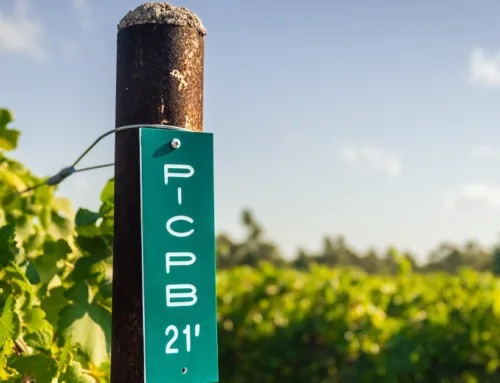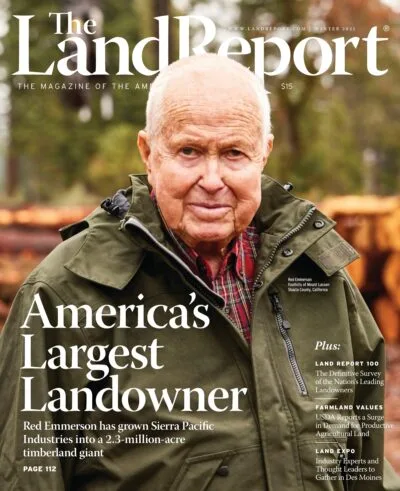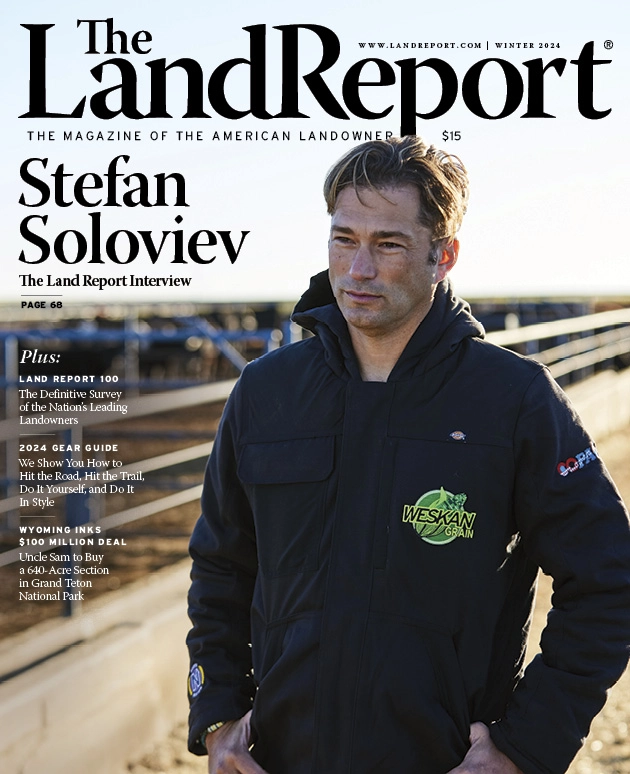Dairy Land Duel
Dairy Land Duel
By Cary Estes
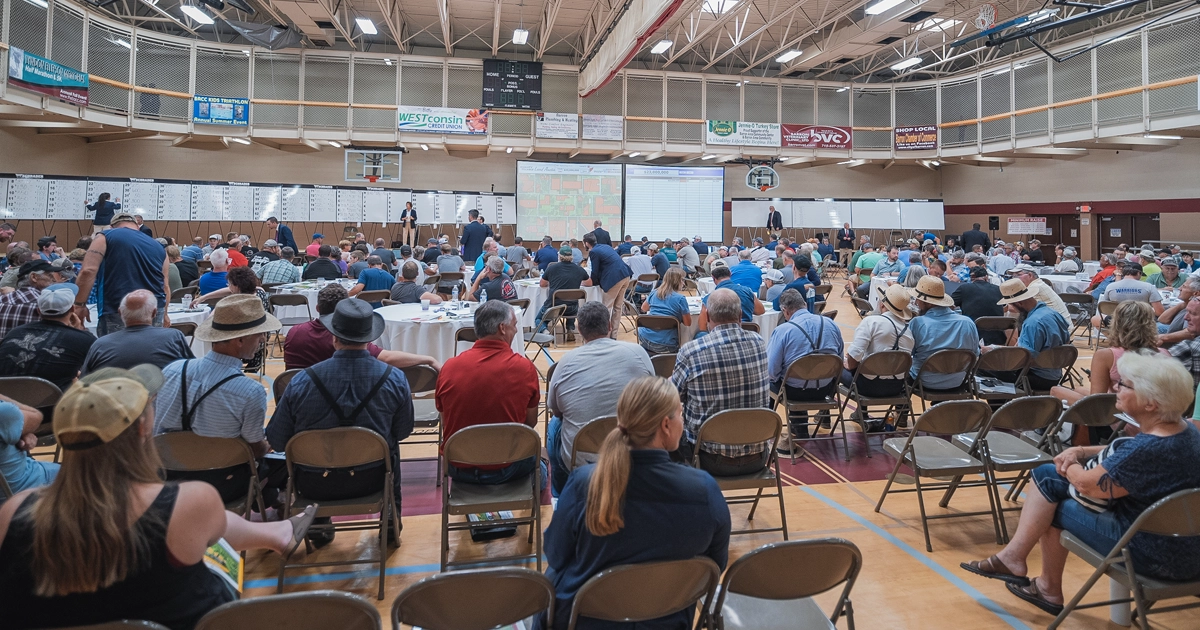
LR_DairyLandDuel-01
PACKED HOUSE. The two-day Schrader Auction drew more than 230 registered bidders and resulted in a total of 19 buyers.
Institutional investors and local farmers engaged in a showdown over nearly 7,500 acres of Wisconsin farmland in August. The two sides basically bid to a draw and, in the process, produced one of the highest-grossing auctions in the 80-year history of Schrader Real Estate and Auction Company.
When the gavel came down on the two-day event, 103 farmland tracts in six North Central Wisconsin counties sold for more than $46 million. Most of the tracts averaged more than $6,000 per acre with one three-tract grouping topping the $10,000 mark.
Those numbers were attained in part because numerous local operators helped drive up prices. More than 230 bidders registered. It was the type of auction – in both size and results – that doesn’t take place very often anymore in the Upper Midwest and Great Lakes region, according to Luke Schrader.
Broad Spectrum of Bidders
“When it comes to tillable packages in this part of the country, you don’t see as many of the bigger portfolios hit the open market as you used to because of the amount of institutional involvement in the industry now,” Schrader says. “A lot of that stuff trades hands directly. So this opportunity for so many tillable acres to come on the local market at one time was very attractive to a wide array of people.
“As a result, we had everybody from every stage of the land-buying demographic involved. You had the local market competing with the national institutions. We had a single institution that was trying to buy the whole thing. Individual operators kept raising their bids. It ended up being about a 50-50 mix. There were two institutions that walked away with about 50 percent of the tracts, while the other 50 percent sold locally.”
Schrader certainly wasn’t counting on such spirited bidding in the weeks leading to the auction. For more than a year, interest rates have been steadily rising, which limits potential buyer pools at auctions nationwide. Plus, in a land where milk is money, milk prices have been dropping, reducing the amount of revenue available for local operators to make additional land purchases.
Substantial Headwinds
“The headwinds were a hot topic,” Schrader says. “Not only interest rates, but milk prices are down significantly, which is important in this part of the country. So the cost of borrowing money was up, and incomes were projected to be down a little because of lower milk commodities.
“But even with these headwinds – and trust me, we heard about them – we still saw some prices that we didn’t expect and were fairly unprecedented for that area. Since there are not a whole lot of portfolios like that hitting the public market around here, this part of the country had not seen the crazy high prices that some others have.”
Schrader says there were several reasons the auction was able to overcome those obstacles, beginning with the investments made over the past decade by the owner, Fall Line Capital. Based in San Mateo, California, the ag tech and farmland venture capital firm assembled the 7,428-acre portfolio between Wausau, Wisconsin, and the Minnesota border in a staggered series of acquisitions. Eighty-seven percent of the acres were tillable, primarily corn, soybean, wheat, and a few hundred acres of canola.
“(The tracts) are at just about the farthest northern point of farm production in the state before it becomes all timber and backwoods,” Schrader says. “To start from scratch and put together an 87 percent tillable portfolio in that part of Wisconsin through multiple transactions over a decade is really an impressive achievement.”
Fall Line Capital
It certainly helped that Fall Line Capital co-founder Clay Mitchell is a fifth-generation Iowa farmer who understands the intricacies of commercial agriculture. In fact, Schrader says the value of the properties was enhanced by Fall Line’s innovative management, including the installation of pattern tile drainage on approximately 1,200 acres.
“Tiling was not a common practice in this region at all,” Schrader says, referring to the piping that is installed just below the surface of the soil. “You typically have it on farms that struggle with being too wet or have a heavier soil base. Tiling allows operators to get back into fields more quickly after a big rain, and it also helps with overall crop health by keeping a better level of moisture in the ground. Fall Line was one of the first to add pattern tile in this area, and those acres sold in the higher echelon of prices.”
The Wisconsin portfolio was an ideal example of the innovative approach that Fall Line takes to its farmland investments, according to Mitchell. He says the company, which focuses on large-scale crop operations nationwide, looks specifically at investment opportunities where output levels can be increased through technological advancements.
Ag Tech
“For us, buying and selling have nothing to do with market timing. It’s all about the cycle of improvements that we want to bring,” Mitchell says. “Our thesis is, if we improve the efficiency and productivity of the farmland, the value will go up. In this case, those areas had really good conditions in terms of soil and rainfall, and they were limited only by a shorter growing season. So in addition to tile drainage, we used biodegradable mulch film to extend the growing season by a month, and we increased the no-till and cover crops. It was all those things – new crops, improved rotation, tile drainage, mulch film – that increased the yield. Basically, our thesis worked.”
Schrader Auctions did its part by hustling the property to auction barely three months after the company’s introduction to Fall Line in May. Schrader said there were several reasons for setting up the sale as quickly as possible.
“First, we were concerned that interest rates would continue to go up,” Schrader says. “And typically there is a lot of land on the market toward the end of the year. You see a lot of farms pop up from October to December. We wanted to be ahead of the inventory increase. Also, getting the 2024 farming rights (for the successful bidders) was significant, especially for the local operators. For them to be able to produce income next year is important. If you’re going to spend $2 million on something, you don’t want to have to wait 18 months to benefit from it.”
Auction Envy
While there might have been plenty of uncertainty heading into this auction, Schrader says there has been nothing but excitement since. He says prospective sellers are now asking, “Can you do the same thing for us?”
“It opened the eyes for a lot of people in that part of the state as to what their farm’s overall net worth just might be because some of these tracts sold for double what is common around there,” Schrader says.
Previously, Fall Line had brought farmland to market via auction only twice in the company’s 12-year history. But the Upper Midwest location combined with the sheer number of tracts made it the logical way to approach this sale.
“An auction is very uncommon for us, but there was no other way we wanted to go in this case,” Mitchell says. “It was a perfect match for the community because you had one bundle of land but more than 100 parcels. There were an enormous number of possible combinations, and every individual tract had value to somebody. So for something like this, a multiparcel auction made sense.”
Importance of Smaller Operators
For Schrader, the biggest takeaway from the auction was the determination of smaller operators to step up and take on the big boys. While institutional investors often grab the headlines with major land purchases, Schrader says that this Wisconsin auction showed that local operations can still make an impact.
“In terms of the big packages worth tens of millions of dollars, a lot of that is trading hands between institutions now,” he says. “But we recently ran a study that shows 75 percent of all farmland is still being bought by individual operators.”
According to Schrader, “People are always rooting for the underdog, so it was neat to see what happened (at the auction). It’s a testimony to the agricultural industry in general, and the fact there is a lot of strength in the individual operations, with these local operators who want to keep family farms running as family farms.”
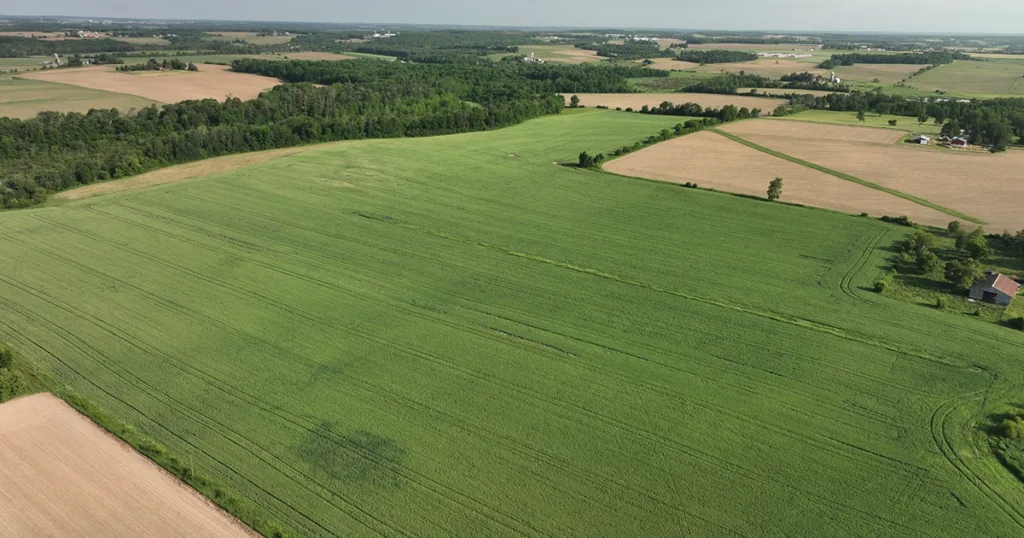
NORTHERN EXPOSURE. In North Central Wisconsin, farmland gives way to timber tracts just north of the auctioned acreage.
Originally published in The Land Report Fall 2023.




